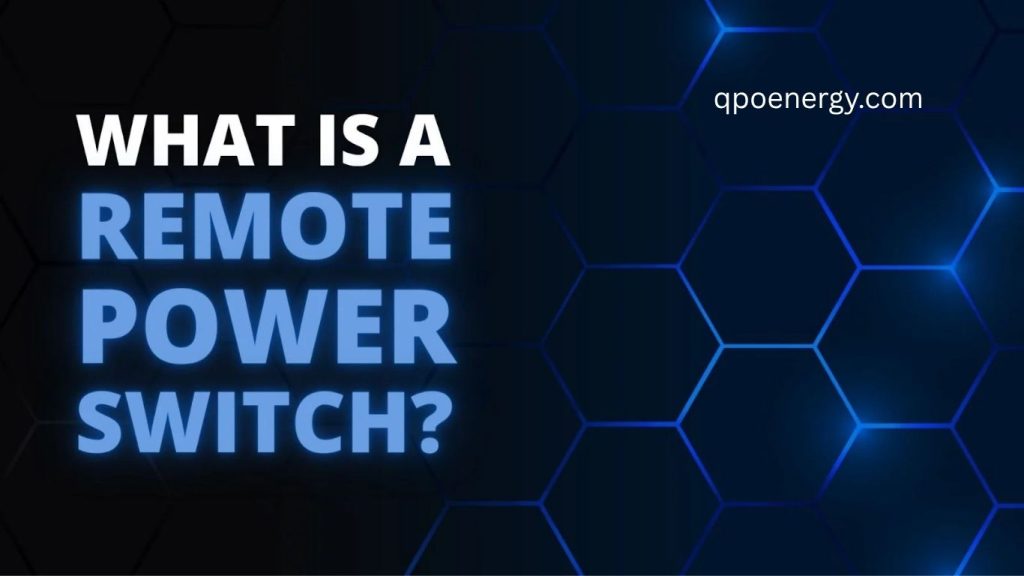In today’s fast-paced digital world, reliability and uptime are critical. Businesses, IT professionals, and data centers cannot afford costly interruptions caused by downtime or delayed system reboots. That’s where remote power switches come into play. These intelligent devices allow you to control, reboot, and manage electronic systems from anywhere in the world, ensuring seamless operations, optimized energy use, and significant cost savings.
What Is a Remote Power Switch?
A remote power switch is a device designed to give users the ability to turn electronic equipment on or off without being physically present. It eliminates the need for manual intervention by providing secure remote access to connected devices.
For IT managers, data center operators, and network administrators, this tool is indispensable. Instead of sending a technician on-site to restart a server or troubleshoot hardware, a remote power switch enables quick and efficient management with just a few clicks. This proactive control enhances reliability, minimizes downtime, and extends the lifespan of mission-critical systems.
Why Remote Power Switches Matter in IT and Data Centers
IT and data centers are the backbone of modern organizations. Even a few minutes of downtime can lead to data loss, decreased productivity, and financial setbacks. Remote power switches directly address these challenges by:
- Automating reboots: Servers, routers, and network devices can be restarted remotely.
- Reducing human dependency: Less need for on-site staff, which cuts travel and labor costs.
- Improving resilience: Automated recovery options keep systems running smoothly even during unexpected failures.
- Streamlining maintenance: Scheduled reboots and updates can be executed without disrupting operations.
This automation not only boosts operational efficiency but also strengthens business continuity by preventing small issues from escalating into larger disruptions.
Web Power Switches: Taking Remote Control Online
A step ahead of standard models, a web power switch uses internet connectivity to extend control via IP networks. Through a web interface or command protocols, administrators can remotely:
- Reboot servers or networking equipment
- Power cycle devices with a single command
- Schedule power on/off cycles during non-peak hours
The ability to manage power through a secure web dashboard makes web power switches particularly valuable for companies with distributed operations, remote offices, or global infrastructure. They eliminate geographical barriers, giving IT staff full control anytime, anywhere.
What Is Remote Power Cycling?
Remote power cycling refers to shutting down a device and turning it back on—without manual interaction. This process is essential when systems freeze, errors occur, or updates require a reboot. Instead of waiting for a technician to arrive, administrators can remotely power cycle devices in seconds.
For example, if a router stops responding in a branch office, an IP-enabled power switch can reset it instantly, restoring connectivity without downtime. This swift troubleshooting ensures business continuity and reduces frustration for users and customers alike.
Key Benefits of Using Remote Power Switches
Implementing remote power management offers advantages far beyond convenience. Some of the most impactful benefits include:
Minimized Downtime
Remote switches allow IT staff to react immediately when systems fail, significantly reducing downtime and associated costs.
Cost Savings
By eliminating the need for on-site visits, organizations save on labor, travel, and operational expenses.
Enhanced Efficiency
Automation features such as scheduled reboots and power cycling simplify maintenance, freeing staff to focus on strategic tasks.
Energy Management
Switches can be programmed to shut down non-essential equipment during off-peak hours, reducing energy bills and environmental impact.
Improved Security
Advanced models offer encrypted access, password protection, and authentication protocols to safeguard against unauthorized use.
Scalability and Flexibility
Whether managing a single office or a global network, remote power switches adapt to diverse environments and workloads.
Choosing the Right Remote Power Switch
Selecting the best switch depends on your infrastructure and business requirements. Here are the top factors to consider:
- Number of Outlets: How many devices need remote control? Multi-outlet models provide broader coverage.
- Control Range: Do you require local LAN access or global remote access over the internet?
- Automation Features: Look for scheduling, auto-ping (for automatic device reboots), and integration with network management tools.
- Security Protocols: Ensure strong encryption, multi-level authentication, and access logs to maintain data safety.
- Redundancy Options: High-availability environments benefit from dual power supplies and multiple network connections for uninterrupted uptime.
- Ease of Use: A user-friendly web interface ensures quick adoption and reduces training requirements for staff.
Evaluating these elements helps organizations maximize the value of their investment while reinforcing long-term reliability and efficiency.
Real-World Applications of Remote Power Switches
Remote power switches are not limited to IT rooms—they add value across industries:
- Telecommunications: Maintain uninterrupted service by remotely rebooting critical networking equipment.
- Broadcasting: Ensure uptime for media servers and streaming platforms by managing power cycles on-demand.
- Healthcare: Support critical medical systems by guaranteeing reliable power control in hospitals and clinics.
- Education: Manage servers and online learning platforms efficiently across multiple campuses.
- Retail: Keep POS systems, digital signage, and security cameras operational without sending technicians to every store.
These use cases highlight how versatile and impactful remote power switches are in ensuring smooth operations in mission-critical environments.
Future of Remote Power Management
With digital transformation and the rise of IoT (Internet of Things), remote power switches are evolving rapidly. Next-generation models integrate with AI-driven monitoring systems, predictive maintenance tools, and cloud-based management platforms.
This evolution will allow businesses to not only respond to problems but also anticipate and prevent them before they occur. As organizations scale globally, remote power management will remain a cornerstone of operational reliability and energy optimization.
Frequently Asked Questions:
What is a remote power switch?
A remote power switch is a device that allows users to turn electronic equipment on or off from any location, reducing downtime and improving efficiency.
How do Dataprobe remote power switches improve efficiency?
Dataprobe switches enable remote reboots, automated scheduling, and proactive monitoring, which reduce maintenance costs and minimize disruptions.
What is the difference between a remote power switch and a web power switch?
A remote power switch allows basic remote control, while a web power switch connects to the internet, offering full IP-based control and scheduling.
Can Dataprobe remote power switches help reduce downtime?
Yes. By enabling instant remote rebooting and automated recovery, Dataprobe switches ensure quick troubleshooting and minimize costly outages.
Are Dataprobe power switches secure to use?
Absolutely. They include advanced security protocols such as encryption, authentication, and user access control to prevent unauthorized access.
Do these switches work only in data centers?
No. While widely used in IT and data centers, Dataprobe switches are also valuable in retail, healthcare, broadcasting, telecom, and education.
What is remote power cycling and why is it important?
Remote power cycling is the process of remotely turning a device off and on to reset it. It’s essential for troubleshooting and system recovery.
Conclusion
Dataprobe’s remote power switches redefine how organizations manage their critical systems. By offering instant control, automated recovery, and secure access, these devices empower IT teams to minimize downtime, cut costs, and improve overall efficiency. Beyond IT and data centers, industries such as healthcare, telecom, retail, and broadcasting also benefit from reliable remote power management. IN a world where operational continuity is vital, adopting Dataprobe’s game-changing remote power switches is more than a technological upgrade—it’s a strategic investment in resilience, efficiency, and future-ready infrastructure.


